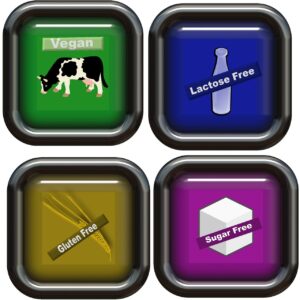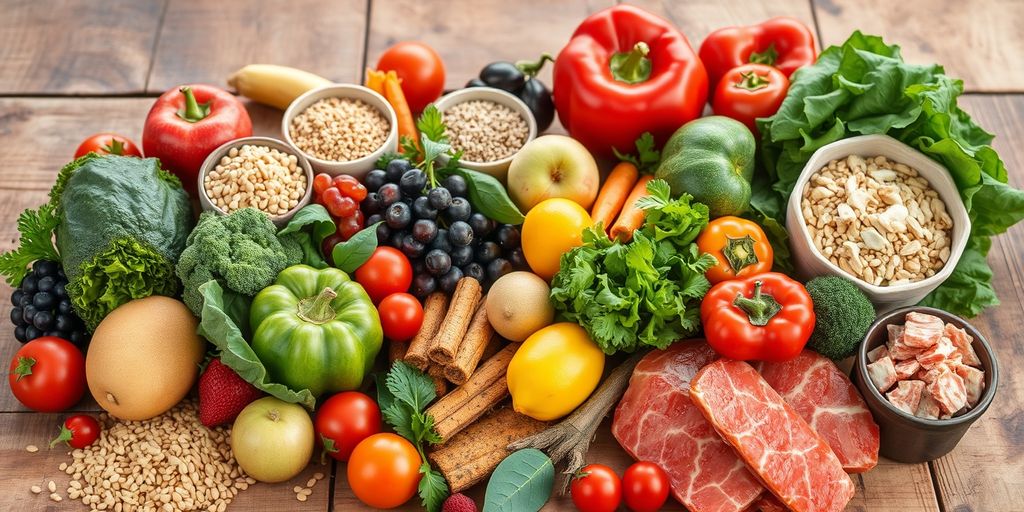Eating right is one of the best things you can do for your body. The Ultimate Guide to Balanced Body Nutrition Menu for a Healthy Lifestyle provides a comprehensive approach to creating nutritious meal plans that support optimal health. A balanced diet gives you the energy you need, helps you feel good, and keeps you healthy. In this guide, we’ll show you how to build a balanced diet, plan your meals, and develop healthy eating habits. We’ll also talk about special diets for those with specific needs. Let’s get started on the path to a healthier lifestyle!
Key Takeaways
- A balanced diet is essential for good health and includes a mix of macronutrients, micronutrients, fiber, and proper hydration.
- Meal planning and preparation can make it easier to maintain a healthy diet and balance indulgence with nutrition.
- Healthy eating habits, such as mindful eating and portion control, can help you enjoy your food while staying healthy.
The Ultimate Guide to Balanced Body Nutrition Menu for a Healthy Lifestyle
‘The Ultimate Guide to Balanced Body Nutrition Menu for a Healthy Lifestyle’ offers essential insights and practical guidance on creating a well-rounded diet. Learn how to craft nutritious meals that fuel your body, support wellness goals, and promote long-term health.
Building a Balanced Diet

Understanding Macronutrients
Alright, let’s dive into macronutrients! These are the big players in our diet: proteins, fats, and carbs. Each one plays a crucial role in keeping us healthy. Proteins help build and repair tissues, fats provide energy and support cell growth, and carbs are our body’s main energy source. It’s all about balance, folks!
Incorporating Micronutrients
Micronutrients might be small, but they pack a punch. We’re talking about vitamins and minerals here. They help with everything from boosting our immune system to keeping our bones strong. Make sure you always have enough staple ingredients on hand — such as frozen vegetables, canned beans, whole grains, eggs, and whole-grain pasta — to create a balanced diet plan.
The Role of Fiber
Fiber is like the unsung hero of our diet. It helps keep our digestive system running smoothly and can even help lower cholesterol. Foods high in fiber include fruits, vegetables, whole grains, and legumes. So, don’t skimp on the fiber, folks!
Hydration Tips
Staying hydrated is just as important as eating right. Water helps with digestion, keeps our skin looking good, and even helps regulate body temperature. Aim for at least 8 glasses a day, and remember, other drinks like herbal tea count too. Cheers to good hydration!
Meal Planning Made Easy

Creating a Weekly Menu
Meal planning doesn’t have to be a chore. Simplify meal planning by creating a simple chart. Start by assessing your calendar for the week. Fill in your chart with meals and get input from your family. This way, everyone has a say, and it makes the process more fun.
Grocery Shopping Tips
Going to the grocery store once or twice a week ensures you have healthy choices in your fridge and pantry. Stock up on:
- Fresh and frozen fruits and veggies
- Protein sources like chicken, eggs, fish, and tofu
- Bulk carb sources like canned beans and whole grains
- Starchy veggies like potatoes and squash
- Fat sources like avocados, olive oil, and full-fat yogurt
- Nutritious snacks like nuts, seeds, nut butter, hummus, olives, and dried fruit
Meal Prep Hacks
Meal prepping can save you a lot of time and stress. Focus on a single meal if you’re new to this. For example, shop for ingredients for a couple of breakfast or dinner dishes for the week. Once that becomes a habit, add more meals until most of your meals are prepared at home.
Balancing Indulgence and Nutrition
It’s okay to indulge sometimes. The key is to balance indulgence with nutrition. Try to fill half your plate with vegetables and fruits at every meal. Choose brightly colored fruits and veggies, especially orange and dark green ones. And remember, it’s all about moderation.
Healthy Eating Habits

Mindful Eating Practices
Let’s start with mindful eating. It’s all about paying attention to what we eat and how it makes us feel. When we focus on our food, we tend to make better choices and enjoy our meals more. Try to eat without distractions like TV or phones. Notice the flavors, textures, and even the smells of your food. This can help us appreciate our meals and recognize when we’re full.
Portion Control
Portion control is key to healthy eating. It’s easy to overeat, especially with large serving sizes at restaurants. A good rule of thumb is to use smaller plates and bowls. This can trick our brains into thinking we’re eating more than we actually are. Also, try to fill half your plate with veggies and fruits, a quarter with protein, and the last quarter with whole grains. This balance helps us get the nutrients we need without overeating.
Eating Out Smartly
Eating out doesn’t have to derail our healthy eating habits. Look for menu items that are grilled, baked, or steamed instead of fried. Don’t be afraid to ask for dressings and sauces on the side. This way, we can control how much we use. Sharing dishes or taking half home for later can also help with portion control. Remember, it’s okay to indulge occasionally, but balance is key.
Handling Cravings
Cravings are normal, but how we handle them makes a difference. Instead of reaching for junk food, try to find healthier alternatives. If you’re craving something sweet, grab a piece of fruit. If you want something salty, try nuts or whole-grain crackers. Sometimes, cravings can be a sign that we’re thirsty, so drinking water might help. And remember, it’s okay to enjoy treats in moderation. The goal is to make healthy food choices most of the time.
Special Diet Considerations

Vegetarian and Vegan Diets
Switching to a vegetarian or vegan diet can be a big change, but it can also be super rewarding. These diets are packed with fruits, veggies, and whole grains, which are great for your health. However, it’s important to make sure you’re getting enough protein, iron, and vitamin B12. Plant-based diets can sometimes lack these nutrients, so you might need to find supplements or fortified foods to fill the gaps.
Gluten-Free Living
Living gluten-free is essential for people with celiac disease or gluten sensitivity. This means avoiding foods like bread, pasta, and many processed snacks. Instead, you can enjoy gluten-free grains like rice, quinoa, and corn. Always check food labels to make sure they’re truly gluten-free. Eating out can be tricky, but many restaurants now offer gluten-free options.

Managing Food Allergies
Dealing with food allergies can be tough, but with some planning, you can still enjoy delicious meals. Always read food labels and be aware of cross-contamination risks. It’s a good idea to carry an epinephrine auto-injector if you have severe allergies. When dining out, inform the staff about your allergies to ensure your meal is safe.
Diets for Specific Health Conditions
Certain health conditions require special diets. For example, a heart-healthy diet can help manage blood pressure and includes lots of fruits, vegetables, and whole grains while limiting salt and saturated fat. If you have diabetes, you might need to watch your carb intake and choose foods with a low glycemic index. Always consult with a healthcare provider to tailor your diet to your specific needs.
Conclusion
Wrapping up, remember that balanced nutrition is not about strict rules or depriving yourself. It’s about making smart choices that fit your lifestyle and taste buds. By focusing on a mix of proteins, healthy fats, complex carbs, and plenty of water, you’re setting yourself up for a healthier, happier life. Small changes can make a big difference, so start with one step at a time. Keep it simple, stay consistent, and enjoy the journey to better health. Your future self will thank you!
Frequently Asked Questions
What is a balanced diet?
A balanced diet includes a variety of foods from all the major food groups: proteins, healthy fats, carbohydrates, vitamins, and minerals. It’s about eating the right amount of each to maintain good health.
How can I start meal planning?
Start by making a weekly menu. List out your meals for each day and create a shopping list based on the ingredients you need. This helps you stay organized and ensures you have all the necessary items on hand.
What are some tips for eating out healthily?
When eating out, try to choose dishes that are grilled, baked, or steamed instead of fried. Opt for whole grains, and don’t be afraid to ask for dressings and sauces on the side to control how much you use.



